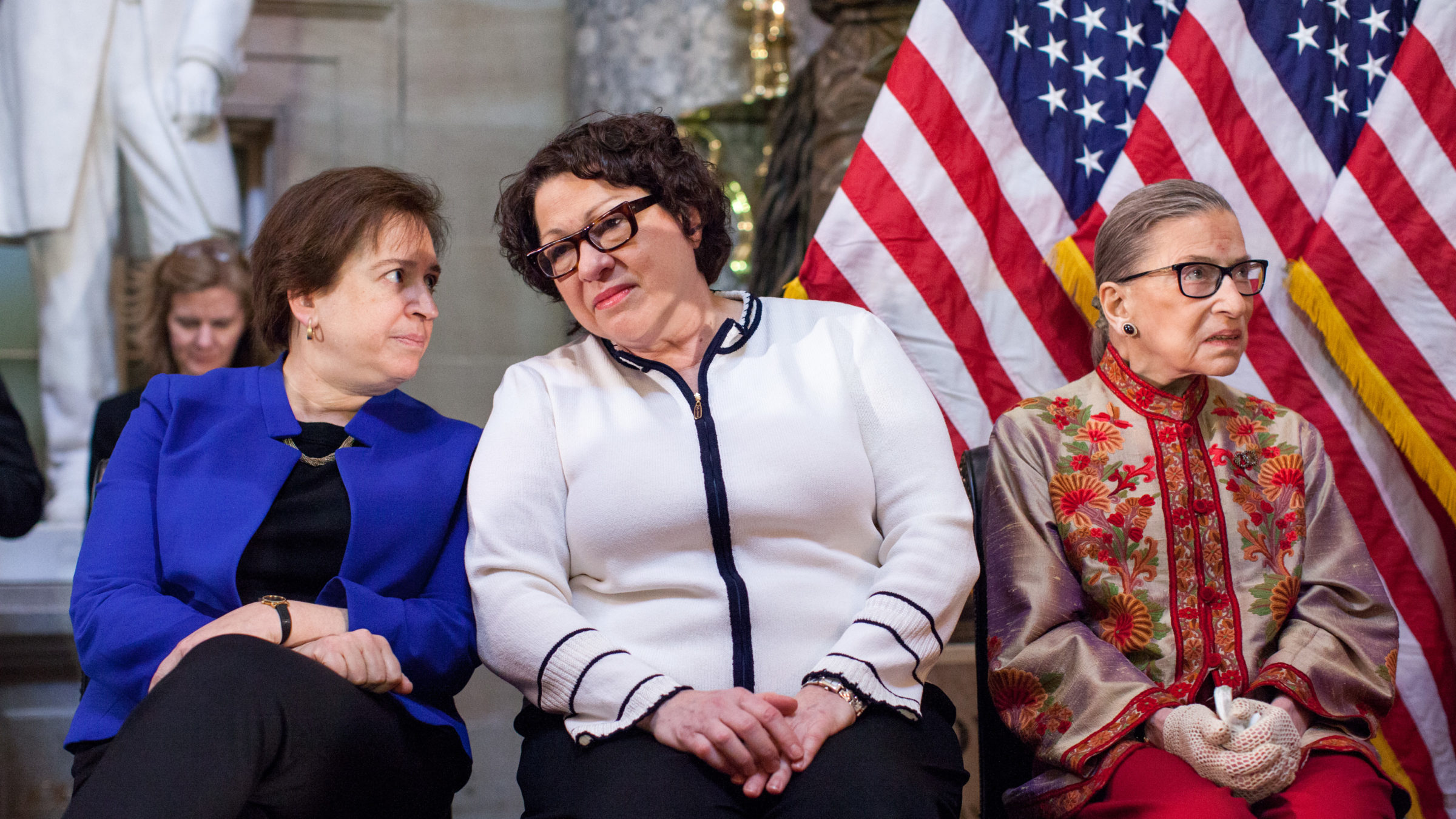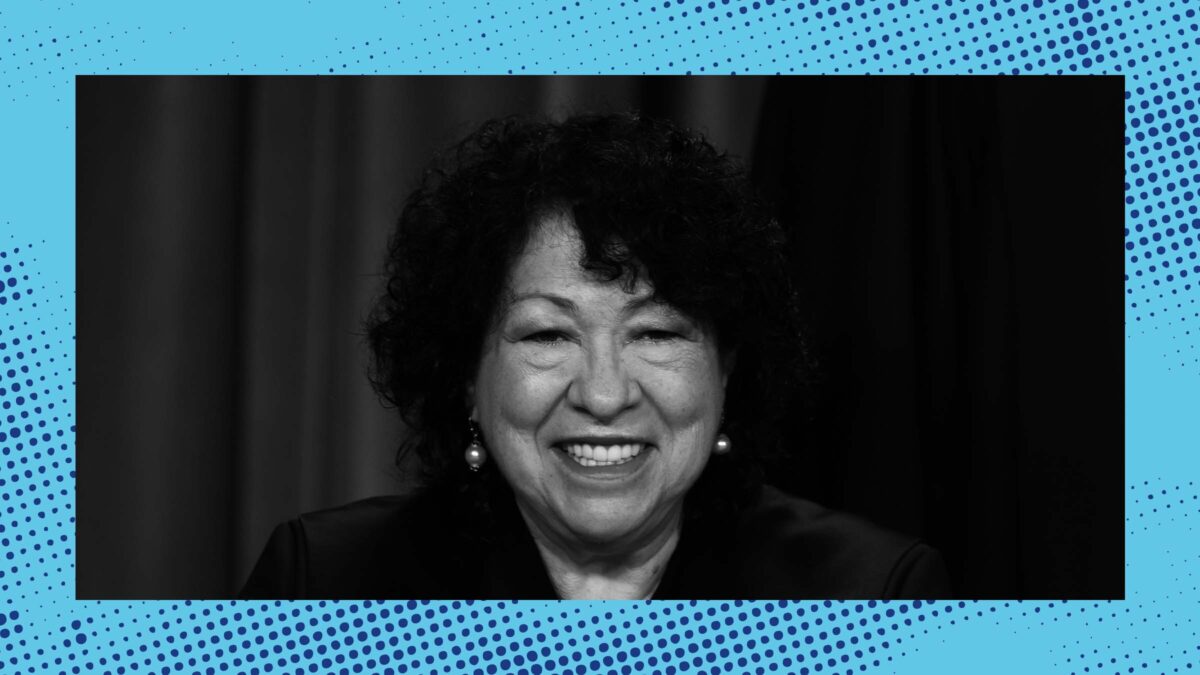In recent weeks, several left-of-center pundits have made, in my view, good and thoughtful cases that Justice Sonia Sotomayor, the eldest liberal justice, should consider retiring from the Supreme Court. Doing so between now and the November election would give President Joe Biden and this Democratic-controlled Senate the chance to nominate and confirm her successor, thus guaranteeing that her seat remains in liberal hands. Not doing so would entail at least some risk that someday, Sotomayor will be replaced by a president whom she (and many others) would really, really prefer not replace her.
A few Democrats, including Sens. Richard Blumenthal and Sheldon Whitehouse, have expressed cautious openness to the idea. More, however, have deemed the discourse to be some combination of unreasonable, inappropriate, and pointless, understandably reluctant to pressure the first Latina justice to leave the bench for an uncertain future benefit. Sotomayor, said New York Rep. Ritchie Torres, has “every right to serve on the Supreme Court until she makes the decision that it is best for her to retire.” Trying to “force” her to do so earlier, said New York Rep. Nydia Velazquez, “isn’t going to get us a liberal majority back.”
I get why this feels like a drastic step. Sotomayor turns 70 this year, which makes her much younger than other liberal justices who recently either retired under Democratic presidents (Stephen Breyer, 83 when he stepped down in 2022) or unequivocally should have (Ruth Bader Ginsburg, 81 when Democrats lost the Senate in 2014). Although Sotomayor’s Type 1 diabetes, which she has managed her entire life, is not nothing, it is also considerably less serious than the two bouts of cancer that, alas, did not prompt Ginsburg to step down when she had the chance.

(Photo by Allison Shelley/Getty Images)
Sotomayor is also widely and justifiably admired on the left—not only as a trailblazer, but also as, for most of her 15-year tenure, the Court’s best justice by a wide margin. At this juncture, losing a consistent, forceful critic of Sam Alito’s ongoing efforts to refashion American society in the graven image of Rush Limbaugh would, to use a legal term of art, feel like absolute shit.
That something feels like absolute shit, though, does not mean it is wrong. Over the past three decades, for all the attention paid to strategic Supreme Court retirements, it is the surprise vacancies—the ones that did not arise under the circumstances that most people, including the justices themselves, perhaps anticipated—that transformed the Court into the conservative juggernaut it is today. Without a clear path to a majority for the foreseeable future, it is thus in liberals’ best interests to minimize the odds that a(nother) untimely departure will lose them a(nother) seat at the table, no matter how cool and good that early-departing justice might be.
The case for Sotomayor’s retirement, in other words, is not about her precise position on an actuarial table. It is certainly not about the clarity of her voice, or the quality of her jurisprudence. It is about the urgent need for Democrats to reconceptualize what it means to serve responsibly on the Supreme Court, where a single bad break can disappear a cherished fundamental right in two years flat. As Peter Shamshiri put it in his case for Sotomayor’s (and Elena Kagan’s) retirement—which Balls & Strikes published in January 2023—undoing the damage wrought by the conservative legal movement is a project that will require “strategic thinking, some gamesmanship, and, occasionally, sacrifice.”
Recent history demonstrates both the payoff of this sort of strategic thinking and the hazards of eschewing it. For all the pressure that Breyer (rightly) got to step down in 2022, and all the (well-earned) criticism Ginsburg received in 2014 and since for failing to do so, liberals have actually been pretty savvy about minimizing the negative consequences of their departures. Over the past 35 years—beginning with the presidency of George H.W. Bush, who appointed the longest-tenured sitting justice—a dozen justices have left office in one form or another. Two conservatives retired so that a Republican president could pick their successor: Sandra Day O’Connor, who cleared the way for Alito, and Anthony Kennedy, who yielded to Brett Kavanaugh. By my count, four liberals did so over the same period: Harry Blackmun, replaced by Breyer; David Souter, by Sotomayor; John Paul Stevens, by Kagan; and, in a real circle-of-jurisprudential-life moment, Breyer, by Ketanji Brown Jackson.
Non-strategic retirements have been rarer and, in the aggregate, have had surprisingly little effect on the Court’s composition. When William Brennan, a staunch liberal, retired in 1990, Bush famously goofed by replacing him with Souter, a then-obscure appeals court judge who became a reliable member of the Court’s liberal bloc. Swapping Thurgood Marshall for Thomas in 1991 swung a seat to the right; replacing Byron White with Ginsburg in 1993 swung a seat to the left, albeit to a lesser degree. On a vote-for-vote basis, Thomas and Ginsburg canceled each other out, and Souter more or less maintained the status quo, to the everlasting fury of the sweatiest attendee at this year’s CPAC welcome cocktail hour. Given how much more valuable Supreme Court seats have become since, absent extraordinary circumstances, I doubt a justice steps down under a non-aligned president ever again.

David Souter at his Senate confirmation hearing, September 1990 (Photo CQ Roll Call File Photo)
It is the unexpected departures—the justices who left the Court and this mortal plane simultaneously—that have made all the difference. Since 1989, three justices have died in office. Chief Justice William Rehnquist got lucky, as far as the business of dying goes, since a Republican president could replace him. But when Antonin Scalia died suddenly in 2016, Senate Republicans blocked President Barack Obama’s nomination of Merrick Garland, empowering Trump to appoint Scalia’s replacement more than a year later. In 2020, when Ginsburg passed away 45 days before the election, Republicans took full advantage, speed-running Amy Coney Barrett’s confirmation in just 30 days. Their discipline cemented the most conservative Supreme Court majority in a century, days before Americans went to the polls to vote Trump (and his Senate GOP majority) out of office.
In all, that’s nine justices in the Court’s modern era who elected to decide who would appoint their replacement, and three who did not. Conservatives, for one reason or another, won every toss-up. If history shakes out a little differently, Obama (or, for that matter, President Hillary Clinton) replaces Scalia, Biden replaces Ginsburg, and the six-justice conservative supermajority running amok right now is, instead, a five-justice center-left majority composed of Sotomayor, Kagan, Garland, Jackson, and Someone Who Is Not Amy Coney Barrett. On their watch, affirmative action is still legal, the “major questions doctrine” is fodder for insufferable law review articles no one reads, and the name “Dobbs” brings to mind only a delightful journeyman quarterback who is also an aspiring astronaut.
You can chalk some of this up to bad luck, I guess, which is part of a system of ostensibly democratic governance in which the balance of power depends on the health of stubborn octogenarians. But bad luck is as much a fact of politics as it is of life. Sometimes, the people in charge of nominating and confirming Supreme Court justices are not who you imagined they’d be. Sometimes your ideological opponents die when your ideological allies don’t control all the levers of power necessary to replace them. And sometimes your ideological allies die at the worst possible moment, when your ideological opponents have a few more weeks of being able to do whatever the fuck they want.
Some of the more recent objections to Sotomayor’s retirement are more practical than philosophical: There are only seven months until the election, which would afford little room for error to Democrats who can be, regrettably, as error-prone as politicians get. Democrats hold a one-seat advantage in the Senate, and would have to count on the cooperation of Kyrsten Sinema and Joe Manchin, two of the most annoying people in electoral politics. There exists a worst-case scenario in which Sotomayor retires, Democrats cannot get their shit together, and President-elect Trump spends December debating whether to announce Jeanine Pirro or a 19-year-old Stormfront forum moderator as her replacement.
For what it’s worth, I am not as pessimistic. Mitch McConnell does not control the Senate. Republicans, again, confirmed Barrett in 30 days, a record Senate Democrats can and should take as a personal challenge. To date, Sinema has voted yes on 192 of 193 of Biden’s confirmed judges. Yes, Manchin says he won’t back any judicial nominee who lacks Republican support, but Ketanji Brown Jackson received three GOP votes in 2022, and at any rate, I’m not certain he’d keep up his dumb little stunt with a Supreme Court seat at stake. (At the very least, I’d like to see him pressed on it.) And Sotomayor, like Breyer, could always make her departure contingent on the confirmation of a successor—a move that, if executed properly, could make the Supreme Court’s extremist right-wing agenda even more front-and-center in this election than it already promises to be.

Two future fracking lobbyists (Tom Williams/CQ-Roll Call, Inc via Getty Images)
I am not saying that replacing Sotomayor would be easy, or that her retirement would entail zero risk. (Again, I am very familiar with the track record of Senate Democrats when faced with political pressure.) I am simply saying that Sotomayor’s presence on the bench entails risk, too, at levels that no one to the left of Susan Collins can afford to dismiss. If Trump wins, Sotomayor is stuck on the Court for at least four more years. It could be even longer if Biden wins but Republicans take the Senate, since they could refuse to fill any vacancy that arises until they recapture the White House, too. Just days before the 2016 election, multiple Republican senators, glumly resigned to a Hillary Clinton presidency, were vowing to keep Scalia’s seat vacant for as long as it took for a future Republican president to fill it.
It’s true that Sotomayor’s retirement wouldn’t solve all (or even any) of this Court’s myriad problems overnight. But preserving what remains of liberal power on the Court in order to stop things from getting even worse is unglamorous yet necessary work. A study published last year estimates that, absent Court expansion, the earliest liberals can hope to have a majority again is 2065. For all the ways that Sotomayor’s situation right now is not identical to Ginsburg’s in 2014 or Breyer’s in 2022, are you confident enough to bet the next several generations’ worth of civil rights on the cards coming down exactly the way you hope?
Sonia Sotomayor is more than worthy of the praise she’s received from those who do not want her to leave the bench. I share in their admiration of her service. But if Democratic politicians and voters hope to change the composition of the Court anytime in the next four decades, they must accept that seats on the Supreme Court are not lifetime achievement awards for accomplished lawyers. They are sources of a tremendous amount of invaluable political power. It is okay to ask the justices entrusted with this power—even, and maybe especially, the justices we like—to be good stewards of it.




